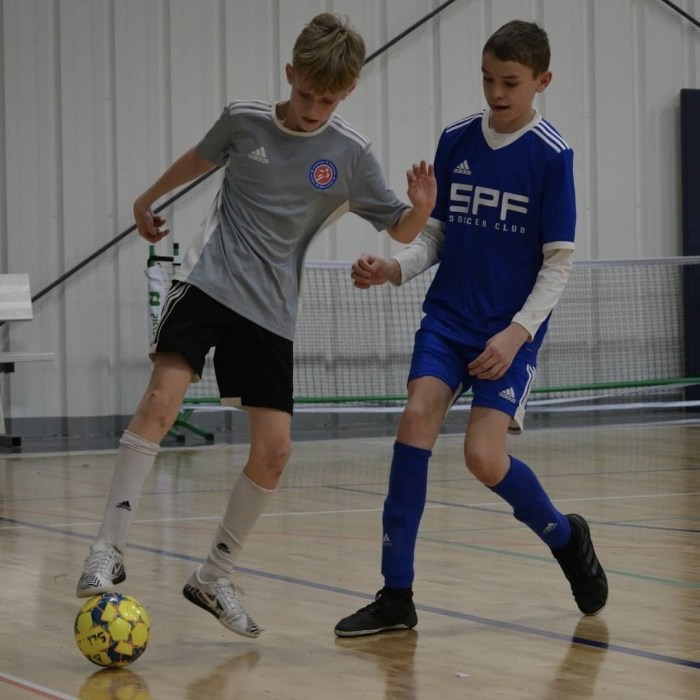Embark on a thrilling journey through the world of Winter Sports Training Programs, where athletes gear up to conquer the snow-covered terrain with strength, skill, and finesse. From specialized techniques to injury prevention and mental preparedness, this guide has you covered for an exhilarating winter sports season ahead.
Overview of Winter Sports Training Programs

Winter sports training programs are essential for athletes looking to excel in sports that are typically practiced in cold weather conditions. These programs focus on improving strength, endurance, agility, and skill development specific to winter sports. By following a structured training regimen, athletes can enhance their performance and reduce the risk of injuries during competitions.
Components of a Winter Sports Training Program
- Strength Training: Involves exercises to build muscle strength and power, essential for winter sports like skiing and snowboarding.
- Endurance Training: Focuses on improving cardiovascular fitness to sustain prolonged periods of physical exertion common in winter sports.
- Skill Development: Includes drills and practice sessions to enhance technical skills required for activities such as ice skating and bobsledding.
Specialized Training Techniques for Winter Sports
- Altitude Training: Exercising at high altitudes can increase red blood cell production, improving oxygen delivery to muscles and enhancing performance in winter sports.
- Discipline-Specific Drills: Tailored exercises for skiing, snowboarding, and ice skating to target specific muscle groups and movements unique to each sport.
Injury Prevention in Winter Sports Training
- Common Injuries: Winter sports training programs aim to prevent injuries like ACL tears, wrist fractures, and concussions through proper technique and conditioning.
- Warm-Up and Cool-Down: Athletes are encouraged to perform dynamic warm-up routines and stretching exercises to prepare the body and prevent strains or sprains.
Mental Preparation and Sports Psychology in Winter Sports
- Mental Training: Techniques such as visualization, goal setting, and positive self-talk help athletes develop mental toughness and focus during competitions.
- Performance Enhancement: Sports psychology strategies can improve confidence, concentration, and decision-making skills in winter sports athletes.
SPORTS TENNIS

Tennis is a sport that has evolved significantly over the years, from its humble beginnings to the highly competitive professional tournaments we see today. The history of tennis dates back to the 12th century in France, where it was played by hitting a ball with the palm of the hand. Over time, the sport evolved, with the development of rules and equipment shaping the game into what it is today.
Modern tennis is played on a rectangular court with a net in the middle, using rackets to hit a felt-covered ball. The rules of tennis have been refined over the years, emphasizing fair play and sportsmanship. The introduction of technology, such as Hawk-Eye technology for line calls and advanced rackets and strings, has also had a profound impact on the game, making it faster and more exciting for players and fans alike.
Evolution of Tennis as a Sport
Tennis has a rich history that spans centuries, evolving from its origins as a leisurely pastime to a highly competitive sport played by millions around the world. The development of rules and equipment in tennis has been crucial in shaping the game into the modern sport we know today. From wooden rackets and white attire to high-tech rackets and colorful outfits, tennis has come a long way in terms of equipment.
The evolution of technology in tennis, such as line-calling systems and advanced training tools, has transformed the game and raised the level of play to new heights.
Training Techniques for Tennis Players
- Specific drills and exercises are used to improve tennis skills like serving, volleying, and footwork.
- Mental toughness and strategic thinking play a crucial role in tennis training, helping players stay focused and make smart decisions on the court.
- Cross-training activities like running, swimming, and strength training can enhance overall performance and prevent injuries in tennis players.
Notable Tennis Players and Their Impact
- Legendary players like Serena Williams, Roger Federer, and Rafael Nadal have left an indelible mark on the sport of tennis, inspiring generations of players to reach new heights.
- Each player has a unique playing style and a list of career achievements that have solidified their place in tennis history.
- The influence of top tennis players extends beyond the court, with their popularity helping to grow the sport globally and attract new fans from all corners of the world.
Summary
As we wrap up our exploration of Winter Sports Training Programs, remember to stay dedicated, focused, and always push your limits to reach new heights in your winter sports endeavors. Whether you’re a seasoned athlete or a beginner, the key lies in consistent training, proper technique, and a passion for the thrill of the winter sports world. Get out there and make this season your best one yet!
Top FAQs
What are some common winter sports included in training programs?
Popular winter sports in training programs include skiing, snowboarding, ice skating, and more.
How can mental training benefit winter sports athletes?
Mental training can enhance focus, concentration, and overall performance in winter sports.
Why is flexibility important for winter sports athletes?
Flexibility helps prevent injuries and improves agility and movement on the snow or ice.